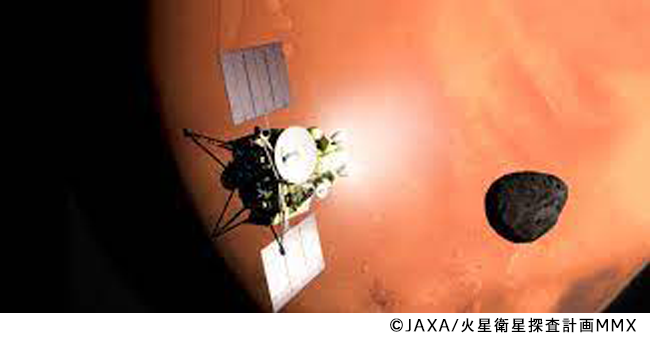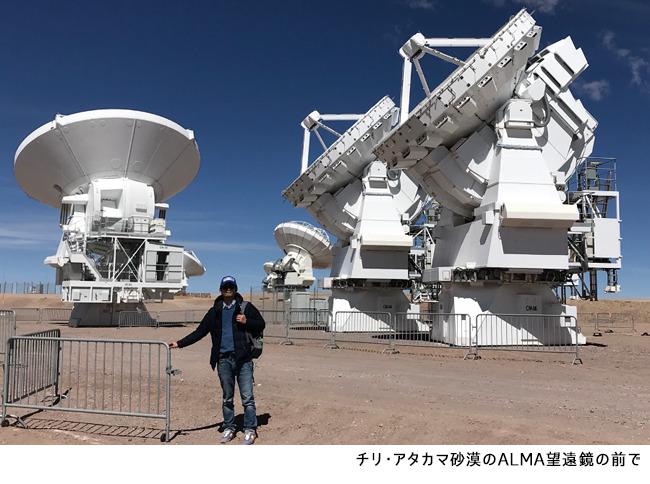"Where has the water that once existed on Mars gone?"
"What is the mechanism that maintains the planetary atmospheric environment where life can exist?"
――Professor Shohei Aoki, a lecturer at the University of Tokyo Graduate School of Frontier Sciences, pursues the elucidation of such a mystery.An interview with Kyoto University Graduate School of Agriculture Assistant Professor Kosuke Shiraishi about the appeal of planetary science and astronomy and Mars research, the significance of cross-border research from Italy to Belgium and then to Japan, and future prospects. We received.We also have messages for high school students, university students, and future researchers.

Mars, the closest planet
Planetary Science/Astronomy and the Attractiveness of Mars Research [Current Academic Research]
Shiraishi: First of all, please tell us why you became interested in the fields of planetary science and astronomy, especially Mars.
(I.e.: When I was a high school student, I watched an NHK documentary program about the mysteries of the universe.In the program, Mars was featured among many planets.I remember being very excited when I heard researchers explain the possibility of the existence of life and the evolution of planetary environments.
For university entrance exams, I searched the Internet using the keyword "astronomy" and applied to Tohoku University's Faculty of Science, which has an astronomy department.After going on to college, I learned that the Department of Space and Geophysics was the place where I could learn about Mars, so I chose it when I was assigned.
Shiraishi: What is the attraction of Mars?
(I.e.: Planets can be roughly divided into Jupiter-type planets and terrestrial planets.Jupiter planets are mainly composed of hydrogen and helium, and are also called gas planets.In the solar system, Jupiter and Saturn are applicable, but it is difficult for people to get off because most of them are made of gas.
On the other hand, terrestrial planets, which are also called solid planets, have a ground surface and an atmosphere, and have the potential for the existence of life and the possibility of human migration in the distant future.
In our solar system, Venus, Earth, and Mars are representative examples.Among them, Mars may have had life in the past or present, and it is a great attraction that we can approach the mystery of the formation and maintenance of the planetary environment where life can exist.Mars' atmosphere is only about 0.6% of Earth's, but the surface temperature is about -70°C to +30°C, which is close to Earth's. It is also thought that humans can migrate by letting them live.
Application to topical exoplanet research*

Shiraishi: I see... what else?
(I.e.:In recent years, observational research to "search for a second Earth" outside our solar system has been active, and candidate planets have been found one after another.Recently, the James Webb Space Telescope launched by the National Aeronautics and Space Administration (NASA) has released images of celestial objects in far greater detail and distances than ever before, leading to the discovery of a second Earth. Expectations are inflated.
However, it is currently very difficult to observe the Earth-type atmospheres of exoplanets.Therefore, we will study in detail the terrestrial planets in our solar system, such as Mars and Venus, and use this information to help us understand the composition of the atmospheres of the terrestrial planets outside our solar system and their origins. is.
How did Mars' ancient water disappear?
Approaching from Observations of the Mars Atmosphere
Shiraishi: Please tell us about your specific research themes, methods, and approaches.
(I.e.: One of the research themes I am currently working on is the mystery of why water was lost from Mars and where it disappeared.So far, many minerals and features have been found on the surface of Mars that would not have formed without the presence of water.Therefore, it is speculated that Mars once had a warm and humid climate like the present-day Earth, had a large amount of liquid water on its surface, and had oceans like Earth until 40 billion years ago. It has been.
However, today Mars has a cold, dry climate with a thin carbon dioxide atmosphere, no liquid water, and only a small amount of atmospheric water vapor and polar ice has been found.
Then, where did the water that once existed in large quantities go?Many scientists believe that a certain amount of water was released into space.In general, planetary atmosphere research, including Mars, involves the following approaches: (XNUMX) numerical simulations based on theoretical calculations, (XNUMX) new development of observation equipment to be mounted on artificial satellites, and (XNUMX) analysis of data acquired by large telescopes and observation instruments. .
All of them are important, and each professional is working together to advance the research.I am an expert in (XNUMX), and would like to understand how a planet's environment that allows life to exist is maintained through observations of the components of the Martian atmosphere, represented by water.
[Research trajectory up to the present]
After graduating from graduate school, he went to Italy and Belgium in search of a better environment.
Received the Baron Nicolet Award from the Royal Academy of Sciences in Belgium
Shiraishi: It seems that you were doing research on Mars not only in Japan but also in Italy and Belgium.Could you tell us about your specific research content and career?
(I.e.: I think it was around 2012-2013 that I started thinking about moving my research base overseas.When I was in the doctoral course, I was developing observation equipment for telescopes and researching Mars observation data from the Subaru Telescope, one of the world's largest telescopes in Japan.
However, it also made me want to analyze the data acquired by the planetary probe in more depth.At the time, planetary probes such as Nozomi and Akatsuki had been launched in Japan, but they had not yet reached planetary orbits, and their data was not readily available.
Therefore, I thought it necessary to go abroad, where a planetary probe had already successfully reached orbit. I chose it asThere, as a member of the Mars Express project team (a European Mars probe that has been observing Mars orbit since 2004), I investigated the climate of Mars, including atmospheric temperature, composition, and aerosol content. rice field.
In the meantime, Belgium has been developing new observation equipment to observe the atmosphere of Mars more precisely. In the fall of 2016, I moved to the Royal Belgian Institute for Space Science after receiving information that a new Mars probe called "ExoMars" had been launched.By examining the vertical distribution of water vapor on Mars in detail, we were able to clarify part of the process by which water disappears into space.
Shiraishi: So you received the Baron Nicolet Prize from the Royal Belgian Academy of Sciences.
(I.e.:yes. Established in 1998, it is a traditional Belgian award given to internationally outstanding young researchers in the fields of planetary science and upper atmosphere research.
Shiraishi:I heard that many researchers are involved in one project in the field of planetary science research, including Mars.Why was only Professor Aoki awarded the prize?
(I.e.: In many cases, more than 50 people are involved in research in the field of planetary science, from engineers who build artificial satellites to researchers who acquire and analyze data.However, I think that the analysis and interpretation of the acquired data is still important as the finishing touches for clarifying the mission's scientific goals.In addition, I understand that you also took into consideration the high degree of contribution to teamwork through the project.Of course, I still continue to analyze the observation data obtained with that device.

→I want to contribute to Japan's Mars exploration plan!
- 1
- 2


